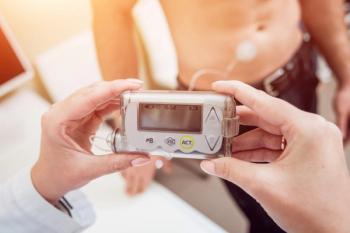
- Drug Topics February 2018
- Volume 162
- Issue 2
The Obstacles That Impede Biosimilars
Hurdles to adoption of biosimilars include regulatory issues and lack of interchangeability with the reference drugs.
Obstacles continue to impede the full adoption and acceptance of biosimilars, according to a new report published by the HDA Research Foundation.
"The U.S. market for biosimilars has been slower to develop than that of many other developed countries due to the slower pace of a supporting regulatory framework," say the authors of the
They identified reasons for the slow adoption such as a lack of provider awareness and acceptance of biosimilars, an uncertain return on investment, a lack of interchangeability with biologics, coding concerns, and on-going patent litigation.
The report was compiled after conducting a series of interviews with U.S. specialty distributors and pharmaceutical manufacturers, as well as evaluating research on
It highlighted the current biosimilar market, challenges that continue to face the industry, and potential strategies to improve awareness among healthcare professionals and patients.
Related article:
The first biosimilar in the United States, Zarxio, launched in 2015. Another five biosimilars received FDA approval by August 2017.
Drug manufacturers continue to see tremendous opportunity within the market for biosimilars, particularly as six of the top 10 U.S. biologic drugs are expected to lose patent exclusivity by 2019.
The biosimilar market remains small, with only three biosimilars reaching the market as of August 2017. However, new biosimilar products continue to flood the drug pipeline with an estimated 700 biosimilar products in development worldwide.
Biosimilars have the potential to provide more therapeutic options for patients with complex diseases and could lower healthcare costs. The delay could be in part due to the length of time it's taken to establish a clear regulatory pathway.
According to the report, discussions about a biosimilar approval pathway in the United States first began in the 1990s, but it wasn't until 2010 that a separate pathway was started through the 2010 Biologics Price Competition and Innovation Act.
Since then, the FDA has provided guidance on the regulatory, scientific and quality considerations to be used for biosimilars, and naming standards.
The FDA released draft guidance in 2017 on the data needed to support interchangeability between a biosimilar and its reference biologic; but no biosimilar has achieved interchangeable status.
Once a biosimilar is ready to launch, there are still unique challenges for the industry.
Related article:
One of the biggest is a lack of awareness and acceptance of biosimilars among providers. For instance, a recent
Manufacturers and distributors believe that education efforts need to be started early to improve acceptance of biosimilars.
"While several biosimilar drugs are now available in the U.S., these products only are available for a small number of therapeutic areas, so most specialty providers have yet to have the option to prescribe a biosimilar drug to treat a patient," the report stated.
The report stressed that education efforts begin with general information about how biosimilars are produced, how they are approved, and the evidence needed for determining interchangeability with the reference product.
Articles in this issue
almost 8 years ago
Urinary Incontinence: What Pharmacists Should Knowalmost 8 years ago
Nutraceuticals: New Opportunities for Pharmacistsalmost 8 years ago
Pharmacists on the Front Line in Treating Cardiac Diseasealmost 8 years ago
Walgreens Teams Help Oncology Patientsalmost 8 years ago
Months Later, Drug Shortages Still a Problemalmost 8 years ago
Patients Like Pharmacies That Give Preventive Carealmost 8 years ago
The New Type 2 Diabetes Technologies Pharmacists Need to Know Aboutalmost 8 years ago
The Value of a Pharmacistalmost 8 years ago
Pharmacists Are the Vitamins of Healthcarealmost 8 years ago
Tamper-Resistant Oxycodone Reduces Use by AbusersNewsletter
Pharmacy practice is always changing. Stay ahead of the curve with the Drug Topics newsletter and get the latest drug information, industry trends, and patient care tips.
























































































































